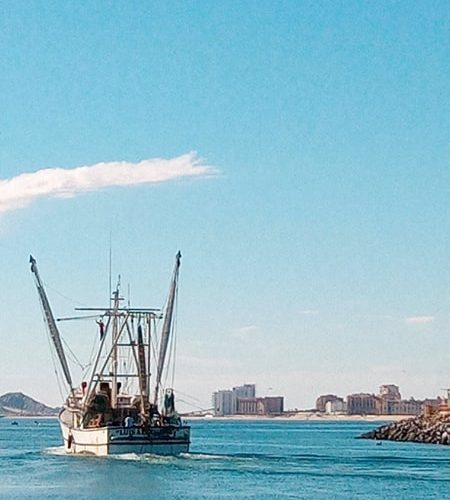Hake fishing represents challenging breath of air for fishing sector
By José Antonio Pérez
Mateo López León, President of the Federation of Shipowners of the Upper Gulf of California, reports though the redistribution of fishing permits did not favor Puerto Peñasco, hake fishing continues to be an alternative in trying to alleviate the poor shrimping season of 2019-2020. Hake has in fact been a valuable resource for the fishing sector for the last 20 years, with an average of 3-4 thousand tons being produced per year, and a historical high of 7 thousand tons.
López León noted despite it still being shrimp season, a large part of Puerto Peñasco’s fleet is currently docked due to its low profitability this year. Only a minimal part of the fleet is trying to maintain production with hake and other fish in general.
Recently, López León detailed the few boats dedicated to fishing hake are making an extraordinary effort to continue their activities so the Puerto Peñasco fleet is not completely paralyzed. While these boats are reporting an average of 15 to 17 tons, unfortunately marketing is not flowing appropriately.
High fuel costs, the unfavorable redistribution of permits for Puerto Peñasco, as well as illegal fishing in the Upper Gulf of California is only making the situation worse, detailed López León, noting this affects the primary fishing sector, though the local deep-sea fishing sector has nothing to do with the illegal practices.
Local representative focuses on Peñasco fishing industry
By José Antonio Pérez
District II representative Lázaro Espinoza Mendívil reports in addition to a 1400% increase in funds for the fishing sector in 2020, Puerto Peñasco is slated for a biotechnology park for the development of aquaculture and species including totoaba and shrimp. This also includes plans to plant date palms as a measure to launch this activity locally. Espinoza seeks to strengthen aquaculture in the region through the proposed construction of a laboratory, which if approved could be important for the area due to the need to develop techniques to improve larvae and seeds in Sonora to promote the production of oyster and other marine species.
Among Representative Espinoza’s efforts to promote all areas of the local fishing industry, including the health and safety of divers, he noted authorization has been granted to acquire a hyperbaric chamber, which could be inaugurated as early as April or May this year. Furthermore, permanent resources have been established to ensure water testing is available throughout the year, relieving fishermen from the costly chemical analysis.
The District II Representative has also met with various fishing authorities to discuss the importance cannonball jellyfish represents for the entire region. This has included follow up on certifications for collection centers and processing plants, as well as training in proper practices in the handling of jelly fish for workers, and improved working conditions. Espinoza details cannonball jellyfish is among the products that can be exported, especially to China, as they are in high demand in that country.
